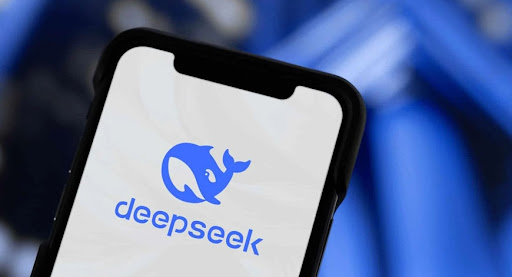The artificial intelligence landscape just shifted with DeepSeek’s latest announcement. The Chinese AI startup has quietly released an updated version of its groundbreaking R1 reasoning AI model on Hugging Face, making one of the most powerful reasoning models freely available to developers worldwide. This move could reshape how we think about commercial AI development and challenge the dominance of closed-source giants like OpenAI.
What Makes DeepSeek R1 a Game-Changer in AI Reasoning
Unlike traditional large language models that generate responses based on pattern recognition, reasoning AI models like DeepSeek R1 employ sophisticated logical thinking processes. These models can break down complex problems, consider multiple approaches, and arrive at solutions through step-by-step reasoning rather than pure statistical prediction.
The R1 model demonstrated this capability by matching and sometimes exceeding the performance of OpenAI’s flagship models on various benchmarks, particularly in mathematical reasoning, coding challenges, and logical problem solving tasks. What sets it apart isn’t just raw performance but the transparency of its reasoning process, allowing users to follow the model’s thinking step-by-step.
DeepSeek’s approach represents a fundamental shift in AI development philosophy. While companies like OpenAI and Anthropic guard their model architectures closely, DeepSeek has embraced radical transparency, releasing not just the model weights but also detailed training methodologies.
Technical Specifications: Understanding the 685 Billion Parameter Model
The updated R1 model weighs in at an impressive 685 billion parameters, placing it among the largest publicly available AI models. To put this in perspective, GPT-3 contained 175 billion parameters, while estimates suggest GPT-4 uses around 1.76 trillion parameters across multiple expert models. DeepSeek R1’s parameter count positions it as a serious competitor to the most advanced commercial offerings.
However, size comes with practical challenges. The model’s massive footprint means it requires substantial computational resources to run effectively. Most consumer-grade hardware, including high-end gaming PCs, lacks the memory and processing power needed to operate R1 without significant modifications or quantization techniques that reduce model precision.
The technical architecture incorporates several innovations in reasoning capabilities, including enhanced chain-of-thought processing and improved mathematical reasoning modules. These components allow R1 to tackle complex problems that traditionally stumped AI systems, from advanced calculus to multi-step logical puzzles.
Commercial Applications Under MIT License
Perhaps the most significant aspect of this release is DeepSeek’s choice to distribute R1 under the permissive MIT license. This licensing decision removes virtually all barriers to commercial use, allowing businesses to integrate, modify, and deploy the model without royalty payments or restrictive usage agreements.
For enterprise applications, this opens unprecedented opportunities. Companies can now access reasoning AI capabilities that rival the most expensive commercial offerings without ongoing subscription costs or API limitations. Industries from financial analysis to scientific research can leverage R1’s reasoning abilities for complex problem-solving tasks.
The MIT license also enables derivative works and modifications, potentially accelerating innovation in reasoning AI. Researchers and developers can build specialized versions optimized for specific domains, from medical diagnosis to legal analysis, without licensing constraints that typically limit such adaptations.
DeepSeek vs. OpenAI: The Competitive Landscape
The release positions DeepSeek as a formidable challenger to OpenAI’s market leadership. While OpenAI maintains advantages in brand recognition and ecosystem integration, DeepSeek’s open-source approach appeals to organizations prioritizing data sovereignty and customization flexibility.
Performance comparisons show R1 competing effectively with GPT-4 on reasoning-heavy tasks, sometimes achieving superior results on mathematical and coding benchmarks. This performance parity, combined with the cost advantages of self-hosting, presents a compelling alternative for businesses evaluating AI integration strategies.
The competitive dynamic extends beyond pure performance metrics. OpenAI’s closed ecosystem contrasts sharply with DeepSeek’s transparency, creating different value propositions for different user segments. Enterprise customers concerned about data privacy and intellectual property protection may find DeepSeek’s approach more aligned with their security requirements.
Regulatory Challenges and National Security Concerns
DeepSeek’s success hasn’t gone unnoticed by international regulators. Some U.S. policymakers have expressed concerns about Chinese AI companies potentially posing national security risks, viewing advanced AI capabilities as strategic assets requiring careful oversight.
These regulatory tensions reflect broader geopolitical competition in artificial intelligence development. As AI capabilities become increasingly critical to economic and military advantages, nations are scrutinizing foreign AI technologies more closely, potentially impacting adoption patterns and market access.
The open-source nature of R1 complicates traditional regulatory approaches. Unlike proprietary systems that can be controlled through corporate entities, open-source models become difficult to restrict once released, highlighting the evolving challenges of AI governance in a globalized technology landscape.
The Future of Open-Source AI Development
DeepSeek’s R1 release signals a potential inflection point in AI development strategies. By proving that open-source models can achieve competitive performance while maintaining commercial viability, DeepSeek demonstrates an alternative path to the closed-source approach dominating current AI markets.
This development could accelerate innovation across the AI ecosystem. With access to state-of-the-art reasoning capabilities, smaller companies and research institutions can now experiment with applications previously reserved for organizations with substantial AI budgets.
The implications extend beyond immediate commercial applications. As more powerful AI models become freely available, we may see accelerated progress in fields like scientific research, education, and healthcare, where cost barriers previously limited AI adoption.
Conclusion
DeepSeek’s R1 model represents more than just another AI release but a statement about the future direction of artificial intelligence development. By combining cutting-edge reasoning capabilities with open-source accessibility, DeepSeek challenges the assumption that the most advanced AI must remain proprietary.
For developers, researchers, and businesses considering AI integration, R1 offers an unprecedented opportunity to access enterprise-grade reasoning capabilities without traditional barriers. While technical challenges around deployment remain, the MIT licensing and open architecture provide a foundation for innovation that could reshape entire industries.
Ready to explore DeepSeek R1’s capabilities? Visit the model’s Hugging Face repository to access the latest release and join the growing community of developers pushing the boundaries of open-source AI reasoning.
This article was rewritten with the aid of AI
At Techsoma, we embrace AI and understand our role in providing context, driving narrative and changing culture.













